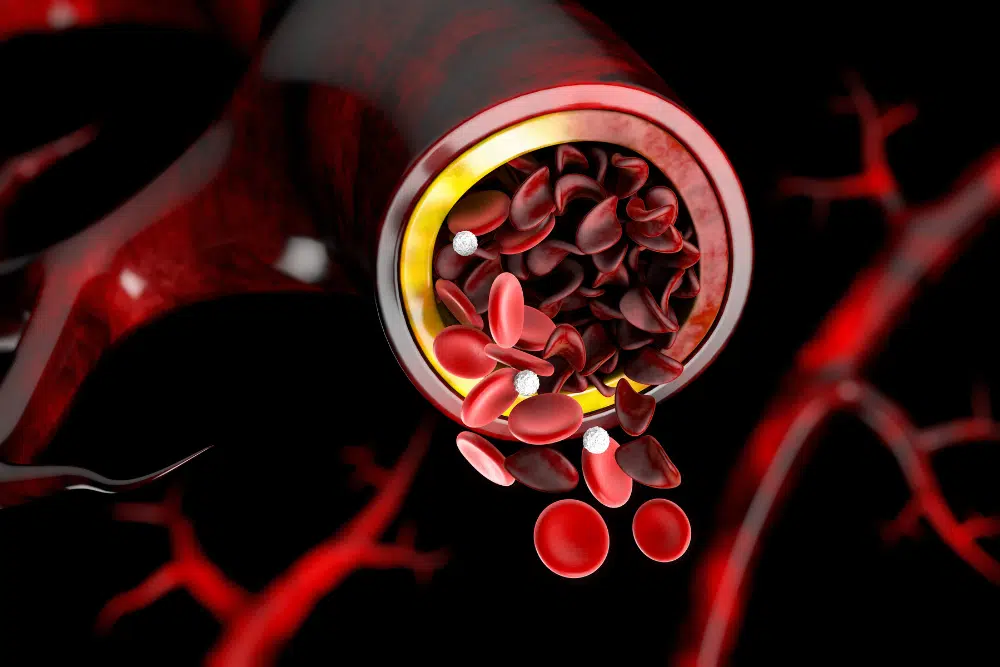
Content Reviewed by:
Michael F. Bonamarte, IV
Content Reviewed by: Michael F. Bonamarte, IV
Since 2005, Michael Bonamarte IV has been a passionate advocate for victims of negligent conduct, corporate malfeasance, and medical malpractice. He has won numerous awards and recognitions, including Best Lawyers in America and Super Lawyers’ Rising Star. He has presented for the American Association for Justice, the AAJ Nursing Home Litigation Group, the John Marshall Law School, and numerous other legal associations. He regularly lectures at Chicago-area aging organizations about nursing home abuse. His writings have been published by the American Bar Association, the Chicago Daily Bulletin, and numerous other prestigious publications.
Sickle cell anemia is a form of disease where the red blood cells become hard and sticky, dying early. This causes a continuous red blood cell shortage. The condition gets its name from the sickle shape of the blood cells. Due to their irregular shape, they become stuck when traveling through small blood vessels, decreasing the flow of blood through the body. When this occurs, pain and infection is common. There is even a strong risk of death.
According to the Center for Disease Control, the sickle cell trait is genetic, passed on from parent to child. If a child receives a sickle cell gene from one parent and a normal gene from the other parent, he or she will carry the sickle cell trait with generally no symptoms or signs of the disease. However, if both parents carry the trait and each passes it on to a child, sickle cell disease will be present from birth.
A Pending Sickle Cell Case
In some instances, adults are aware that they carry the sickle cell trait through blood testing. That was the case with a family whose story was recently featured on Fox 32 News. The parents of a young girl knew that they were both carriers of the sickle cell trait. In order to avoid passing on the disease, the mother went to a doctor and requested a tubal ligation to prevent pregnancy. The surgery was completed and the woman was told that it was a success. Six months later, she learned that she was pregnant. A baby born with sickle cell disease and she must deal with pain and frequent medical emergencies for the remainder of her life.
Though the mother’s malpractice claim against the doctor is still pending, the appellate court already made one important determination. The court ruled that, if the doctor is found negligent in his actions, he should be financially responsible for the child’s sickle cell related medical expenses until she reaches the age of majority. According to the article, this is based on the doctor’s alleged malpractice, knowing that a baby could be born with a genetic medical condition.
Diagnosis and Treatment
Sickle cell is generally diagnosed in the hospital at birth, through standard blood screenings. In some instances, the disease is diagnosed in the mother’s womb. Early diagnosis is vitally important because babies with sickle cell disease are at high risk for complications and illnesses. Usually, babies begin to show complications for the disease around five months of age. The symptoms and severity vary with each patient. Some of the complications include:
- Swelling of the feet and hands
- Episodes of severe pain from the constriction of blood through the body
- Anemia, due to the lack of blood cells
- Frequent bacterial infections. The CDC reports that pneumonia is the leading cause of death among infants and children with sickle cell disease.
The best course of treatment also varies among patients. The only cure for sickle cell disease is a bone marrow or stem cell transplant, according to the CDC.
If your child suffers from sickle cell disease and has been the victim of medical malpractice, call an experienced attorney for a free consultation.



